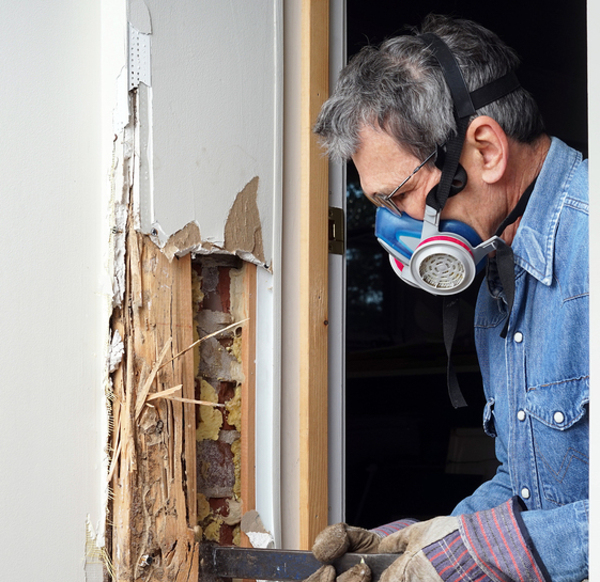
Maybe you’re a first-time home buyer, or perhaps it’s been a while since you’ve had a home inspection. Either way, you probably wonder which systems your home inspector will check or if he’ll inspect everything, inside and out.
You should get a pre-inspection agreement that explains all of the ins and outs of your home inspector’s work. But until then, here’s a primer on what every home inspection covers as long as it’s visible and the inspector can safely access it.
System #1: Roof
Although they’re steep and require a ladder to access, inspectors usually walk the roof to look for material defects. Some roofs are unsafe or too steep to walk. In those cases, the inspector might rely on binoculars.
If the roof has an extreme pitch, they might use an industrial lift such as a “cherry picker,” which could cost extra. Some inspectors have now switched to drone technology, which lets them stay on the ground and pilot a small UAV that snaps images of the roof from every angle.
System #2: Electrical
You’ll use the electrical system all day, every day. But a defect can put you in harm’s way. That’s why inspectors always inspect outlets, breaker or fuse boxes and other parts of the electrical system throughout the home.
Your inspector will check for GFCI protection in kitchens and bathrooms, and they’ll also use a tester to determine whether outlets are wired properly. They’ll test lights, switches and report back on every defect that’s found.
System #3: Plumbing
There’s a lot more to plumbing than faucets, toilets and drains. Your inspector will give the house a thorough once-over to ensure everything works as it should and that there are no visible leaks.
They’ll look for leaking faucets, running toilets and bathtubs that drain slowly. But they’ll also look for evidence of hidden leaks, adequate plumbing vents and the type and condition of the water supply lines. If the home has a septic system, ask about whether it will be inspected. For some inspectors, septic systems are an ancillary service.

General home inspectors don’t dig into walls, but a termite inspector might have to if pests are present.
System #4: Foundation and Crawl Space/Basement
You can learn a lot from a crawl space or basement, which is why they’re always inspected as long as they’re accessible. Electrical wiring might run under the floor, and so might HVAC ductwork and plumbing.
Your inspector might spot water leaks, damaged ductwork and cracks in the foundation. There might be pests under the house or a surprising defect or two. If there’s no insulation under the floor, they’ll report back and let you know.
System #5: Attic
Like the spaces under a house, attics are a good indicator of overall home health. Lots can happen in an attic. And because it’s not part of the usual living space, defects can go unnoticed for a long time.
Your inspector will check the insulation, wiring and ductwork that’s present. They’ll also examine the space for evidence of a roof leak, condensation problems, pests and adequate ventilation.
System #6: Appliances
Home inspectors always inspect built-in appliances, but the scope of the inspection is limited. For example, you’ll get a report on whether the range, refrigerator and dishwasher are installed properly and if they operate.
If you want to learn more about the home’s appliances, you’ll need an appliance technician. They can tell you whether the oven or fridge hold the right temperature or the dishwasher and make repairs, if necessary.
System #7: HVAC
In winter, few things are as important as the heating system. Your inspector will run the furnace, AC, heat pump or boiler through its paces and tell you about defects if any exist.
As with appliances, the inspector looks for proper operation, such as whether the system turns on, runs a normal cycle and responds to the thermostat. They won’t diagnose problems and can’t report on efficiency. For that, you’ll need an HVAC technician.
System #8: Fireplaces and Wood-Burning Appliances
Some home inspectors give fireplaces and wood-burning appliances a thorough inspection from the top of the chimney to the bottom of the firebox. But most inspections only involve looking for obvious signs of problems, such as creosote buildup, damage inside the firebox and improper installation or construction.
It’s worth the time and expense to hire a fireplace expert after your general home inspection. You’ll learn about issues such as possible carbon monoxide leaks and damaged chimney mortar, and the technical may clean the chimney, too.
System #9: Exterior and Interior
Home inspectors inspect the interior and exterior of the home. Outside, you’ll learn about the home’s siding, windows, gutters and downspouts and the condition of the porch, deck or patio. If there are any outbuildings, the inspector may inspect those, as well.
Inside, they’ll report on the condition of the floor, subfloor, staircase and railings, ceilings and walls. Interior doors, closet lighting and numerous other items inside the home should make it into your home inspection report.
Home inspectors inspect produce comprehensive reports, but they don’t investigate everything. For example, many don’t inspect hot tubs, pools and their related equipment. Some outbuildings are excluded, and so is landscaping unless it poses an obvious and immediate threat to the home.
At Hire an Inspector, we help people like you connect with a reputable, experienced professional. If you’re ready to buy the home of your dreams, we’ll find a home inspector near you.
